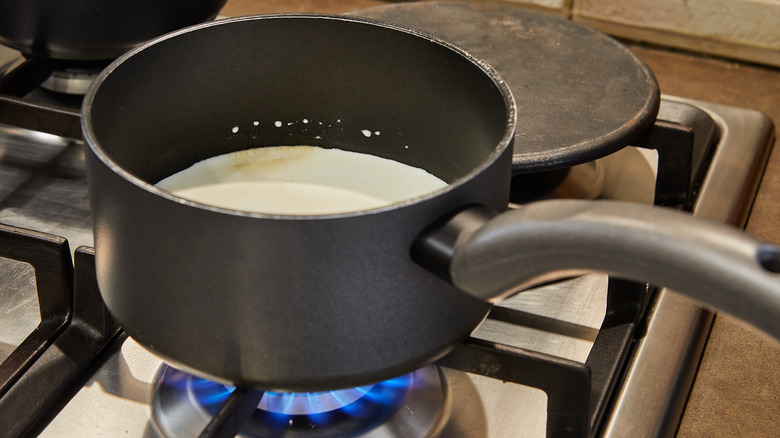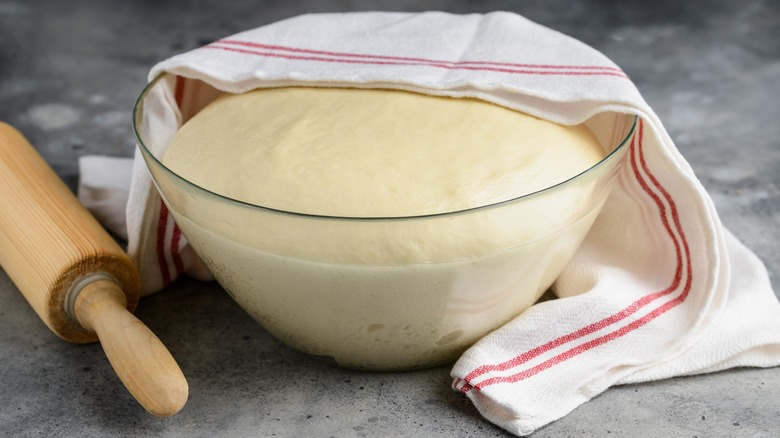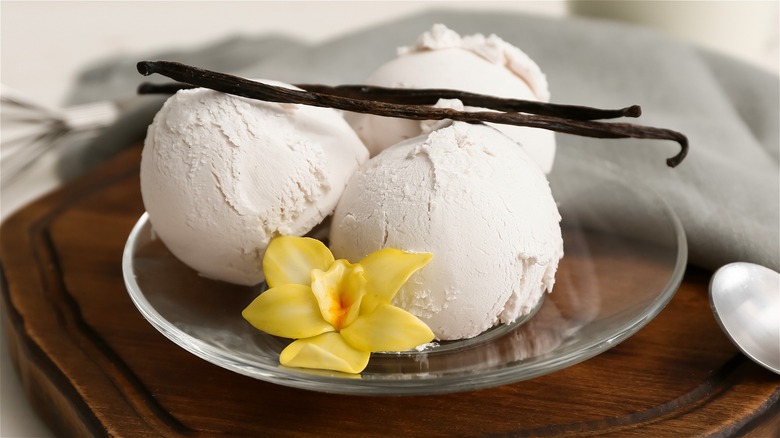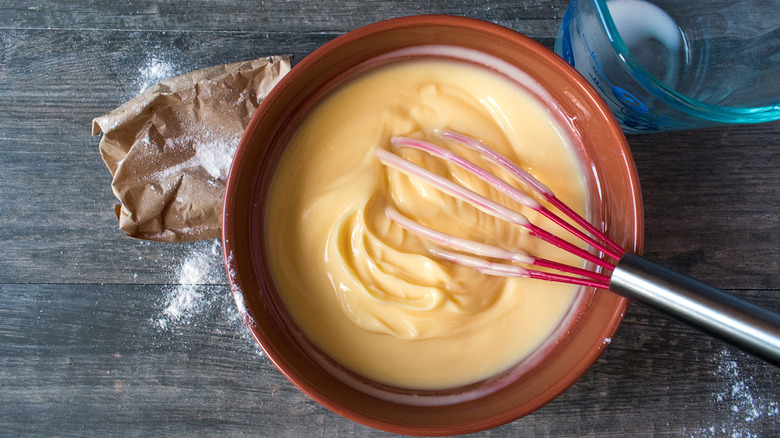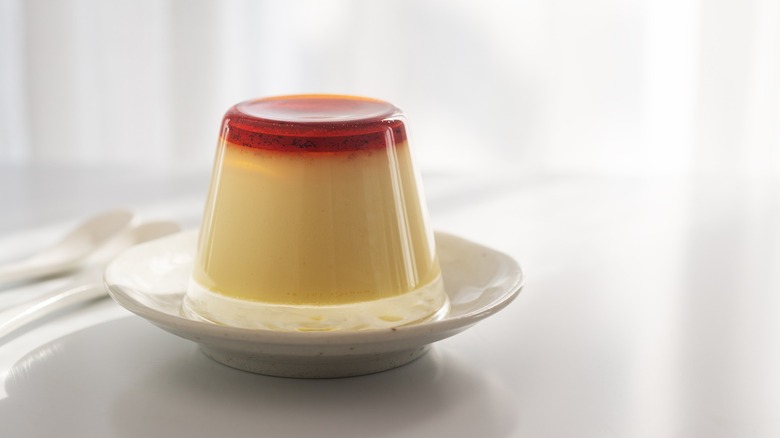The Important Reasons A Recipe May Call For Scalding Milk
If you've been digging through stacks of old family cookbooks, you're likely to come across a recipe that calls for scalded milk. The process of scalding milk calls for the milk to be brought to a near boil and then cooled. Now, as this can appear to be a solely sanitary step, you may be wondering if scalding your milk is really necessary.
Scalded milk used to be a ubiquitous step in cooking, before pasteurized milk became the norm. This is because heating up the milk allowed home cooks to kill potentially harmful bacteria. These days, commercially sold milk is pasteurized before hitting the shelf, so scalding for safety purposes isn't necessary. But that doesn't mean you should ditch the step entirely.
In fact, scalding your milk might just be the key to perfecting your next baking project. It can improve both the texture and flavor of your food, as the temperature alteration changes how milk interacts with other ingredients. Below you'll find some of the very important ways that scalded milk can enhance your cooking.
It can help your dough rise
Are your rolls hard and lifeless? Do those buns just refuse to rise? Well, the temperature of your milk might be to blame. This is because milk, though essential in many baking recipes, contains whey proteins that inhibit the development of gluten, the protein that gives rolls and bread their shape and texture. However, when you scald milk, whey proteins are made weaker, and are less likely to prevent gluten from developing in your recipes. Scalding your milk is therefore a vital step in recipes that require adequate gluten development.
Rolls and milk-based breads, for example, require proper gluten development, as they are spongy and fluffy recipes. After all, no one wants a flat or dense roll. Therefore, scalding your milk before incorporating it into recipes like these might be the key to giving your next baking project the most perfect, fluffiest texture possible.
It aids in the infusion of flavors
Scalded milk doesn't just benefit your breads and rolls, however. It can also be essential to the process of making ice cream, custard, and pudding. In these projects, scalded milk is especially helpful in the process of infusing flavors.
You may be wondering why so many ice cream recipes call for the use of scalded milk, as it can seem counterintuitive for these cold recipes to require hot ingredients. And some have even gone so far as to deem the step unnecessary. However, if you're hoping to add flavor to your ice cream (or custard), you will most definitely want to give your milk (or cream) a good scald.
This is because warming your milk helps flavors to fully infuse into your milk. Adding a stick of cinnamon, a sprig of lavender, or some vanilla bean to scalded milk will help to fully extract the flavor from its source and make your ice cream, custard, or pastry cream as tasty as possible.
It may save you time
Beyond gluten development and flavor infusion, scalding milk is a great way to save time on your next baking or cooking project. If your recipe calls for melted butter or fully dissolved sugar, warm milk is the way to go. Simply put, scalded milk will help melt your ingredients as you combine them. The heat from your milk will melt your butter quickly. And, warm temperatures help increase the molecular movement in both your milk and sugar, allowing for an easier breakdown of sugar within your liquid. This is why you should always add sugar to your hot coffee before you add cream, as sugar dissolves best in hot liquids.
So, instead of melting your butter and sugar separately, you can simply add them to your scalded milk, saving you time and creating a better workflow in your cooking method. Additionally, using warm milk can help your dough to rise quicker, and shave time off of your bake.
It can improve the texture
Scalding your milk won't just give you fluffy rolls, perfectly flavored ice cream, and less time in the kitchen. It can also help to prevent curdling in your pudding recipes.
Eggs, which need to be cooked, are often added to pudding recipes. Scalding milk helps get this done while improving the texture of your final product. The slow incorporation of ingredients into the hot milk thins out your eggs, preventing the egg proteins from seizing up and causing lumps to form. Scalded milk will cook your eggs more gradually, preventing other textural problems. Since the key here is bringing your eggs to temperature slowly, it's important to only mix in a small amount of milk at a time, until the eggs are fully brought to temperature. Otherwise, you risk curdling your pudding.
So, whether you want a perfectly smooth classic vanilla pudding, a soft batch of rolls, a creamy bowl of yogurt, or a tasty scoop of homemade ice cream, you'll definitely want to pull out that saucepan and get to scalding.
